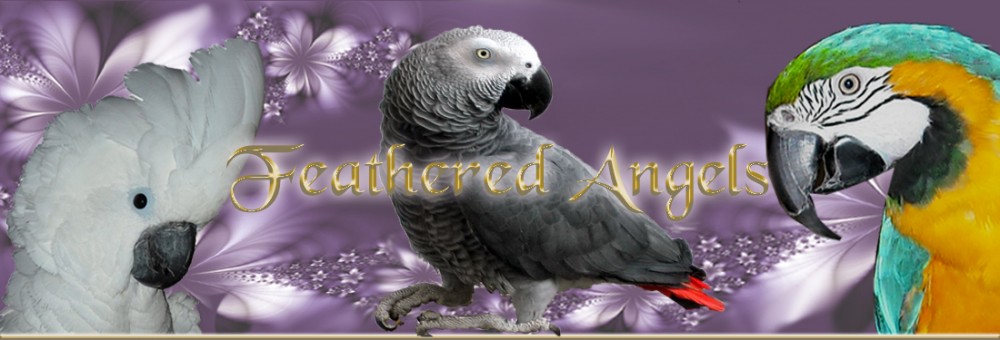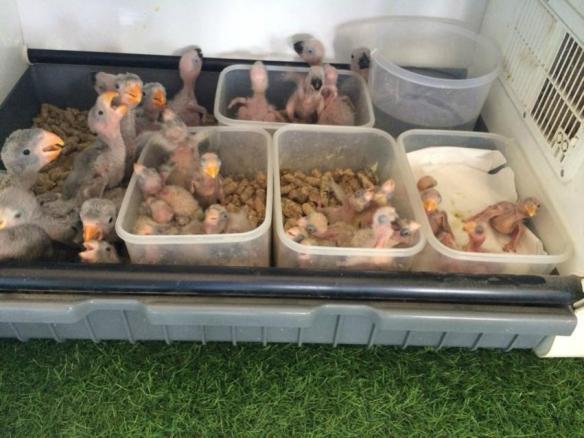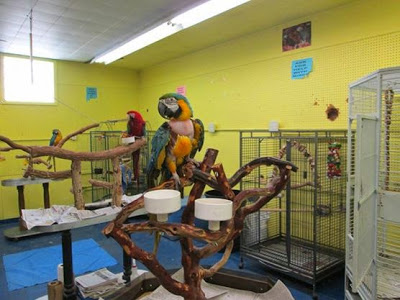This was written by Vicki Knox LeClaire who runs
Miss Vicki’s Parrot Village, Inc
The most heartbreaking things I face on a regular basis revolve around the ‘less than perfect’ birds…not from the birds themselves, but from the humans who encounter them. Here are just a handful of the facts and theories I have about the topic of plucked birds…
1. Don’t feel sorry for a plucked bird to any higher degree than a non-plucked bird. All are captive; all deserve respect, not sympathy. We created the problem, so we need to stand by them. Seeing a plucked bird here, then giving the ‘Bless his/her heart’ is not helping that bird; adopting him/her is.
2. Don’t assume a bird is plucking because he/she is in rescue; that is rarely the case. We have only had two of hundreds, and I am sure other rescues have the same experiences.
3. Don’t assume plucked birds are bored, unhappy, or sick. We don’t see plucked birds in the wild because if they exist, they are plucked out of the gene pool by predators or death; that is natural selection.
4. If your bird is plucking, take your bird to the vet for a full check up, including blood work, to determine if medical causes are to blame. If so, fix them, if not, love your bird as they are. If you are providing a good diet, enrichment, proper sleep, a toxin-free environment, etc. odds are, this is your bird’s ‘normal’. Accepting is and loving him/her as they are is far better for them and you than to constantly be stressing over appearance. Doing this is far less expensive for you than buying every snake oil product out there aimed at ‘fixing’ the ‘problem’.
5. Don’t send your plucking bird to a breeder because you cannot stand how ‘unhappy’ he/she is. Odds are, if you are doing the above, the bird is nowhere near as unhappy as others make you feel the bird is. Sending plucked birds back to breeders is one source of the problem…taking plucked birds into the breeding gene pool that is already messed up, and breeding more birds with the potential genetic predisposition to plucking is only adding fuel to the fire. Mulligan, my M2 that started the rescue was one of these birds frown emoticon
6. Expect it to be a bigger problem in the future. Without the influx of wild parrots into the gene pool and so many breeders not doing their research, we are soon to be facing serious problems from inbreeding. Immunity issues, feather issues, new diseases and abnormalities we have never seen before…hold onto your hats folks…
7. Just love them for who they are. They do it to you every day, just follow their lead














